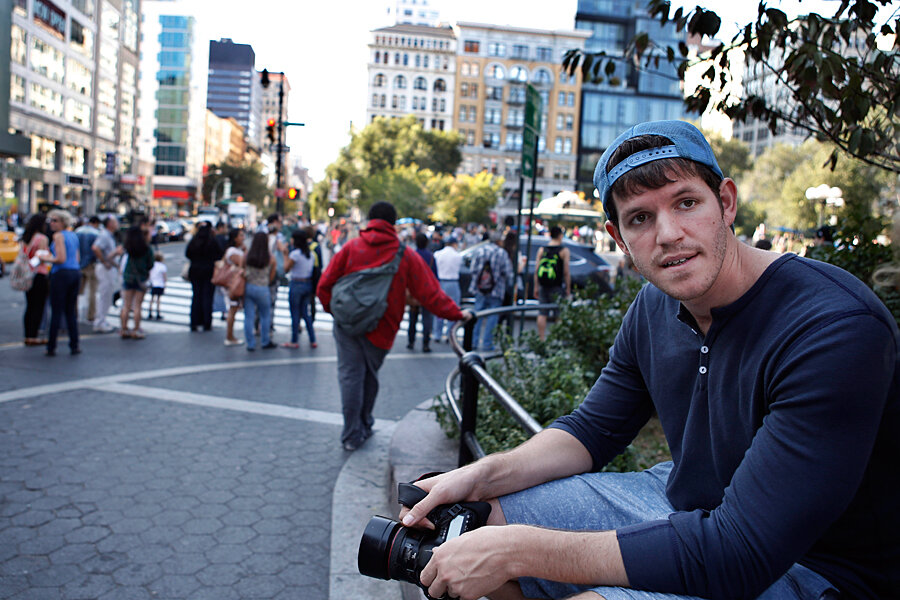'Humans of New York' blog raises $1M for students facing hurdles to college
Loading...
When it comes to preparing students for college – and even helping them aspire to it – there’s a chasm between the haves and have-nots.
The need to bridge that divide was highlighted this week in two ways.
One is the story of an online crowdsourcing effort that will enable a principal in Brooklyn, N.Y., to fulfill her dream of taking sixth-graders out of their high-crime neighborhood to visit Harvard University in Cambridge, Mass. – to show them “they can go anywhere, and that they will belong.”
The other was a formal event at the White House Friday afternoon, in which first lady Michelle Obama honored the National School Counselor of the Year and highlighted school counseling as part of her Reach Higher initiative to inspire more students to pursue postsecondary education.
“Schools have not historically been accountable or given resources to support students’ postsecondary aspirations and plans,” says Mandy Savitz-Romer, a senior lecturer at the Harvard Graduate School of Education.
Public school counselors are responsible for supporting students in the areas of academics, social and emotional needs, and college/career readiness. They have an average caseload of 471 students, nearly double the recommended 250.
One out of 5 high schools “operates without a school counselor at all,” said John King, a senior adviser at the US Department of Education, during a press call with reporters Thursday.
Modest gains have been made in providing students with more support, through nonprofit groups and some school district initiatives, Ms. Savitz-Romer says, but “there’s still a large percentage of students we have not engaged in planning for their future.”
Primarily, she says, these are students who would be the first generation in their families to attend college, and often they decide early on that college isn’t for them. So they don’t get on the path that would lead them there.
That disengagement is what Principal Nadia Lopez is hoping to avoid for her students at Mott Hall Bridges Academy in the Brownsville section of Brooklyn.
Photographer Brandon Stanton got to know her after posting a photo and quote of a student named Vidal on the blog "Humans of New York." When Mr. Stanton heard about Ms. Lopez’s hopes to expose students to Harvard, he started an online fundraiser. The original goal was $100,000, but about a week into it, donations passed the $1 million mark, and Stanton announced that everything above $700,000 would go toward a scholarship fund for graduates of the school.
The donations show that people realize “this is a civil rights issue, and to make sure that students have access to higher education means we’re going to be a better society,” Savitz-Romer says.
But instead of kids having to rely on happenstance or a particularly inspiring leader, she says, “we have to find a way to get it equitable across schools.”
That’s why Mrs. Obama and the White House have been challenging universities, school districts, and nonprofits to boost school counseling resources and offer better training to help counselors reach the students who most need their help. Related gatherings last summer and fall attracted hundreds of people interested in working on this cause.
“Often America’s school counselors are truly the deciding factor in whether our young people attend college or not,” Obama said at the White House gathering Friday. It’s about time, she said, to start “giving our school counselors the support and recognition they deserve. And not just with words, but with meaningful action, with resources.”
In the past year, various groups have stepped up to invest tens of millions of dollars in such efforts, Obama said. And the Education Department has also offered millions of dollars in grants to districts and schools to boost their counseling programs.
For the first time, school counselors were honored at the White House just as national teachers have long been honored. Obama, flanked by semifinalists and finalists, congratulated Cory Notestine, a school counselor at Alamosa High School in Colorado, who won this year’s award from the American School Counselor Association.
“Each of us here today aims to foster an educational environment free of barriers, where students can set their goals as high as they can dream,” Mr. Notestine said. “There simply are not enough of us.... But school counselors ... do not allow this to stop our efforts to reach every single student.”
“He takes the time to relate to each of his students on a personal level. I have seen several students’ lives changed because of him,” a fellow counselor said of him in a press release. Others credited him with leading a cultural shift in the counseling department during his first year at the school.
School counselors said in a 2012 survey that college access was the area in which they needed the most training, Education Week reports. Many degrees in counseling do not require course work specifically in college counseling, but that’s starting to change as higher-education institutions make reforms, Savitz-Romer says.
One example of a nonprofit doing encouraging work in this area is the College Advising Corps in Chapel Hill, N.C. Advisers, many of them first-generation college graduates, spend two years working with counselors in high-needs schools to help improve the rate of underrepresented students who apply for and attend college. Students who meet with these advisers have been found to be 23 percent more likely than those who don’t to apply to college and submit the paperwork for financial aid.






